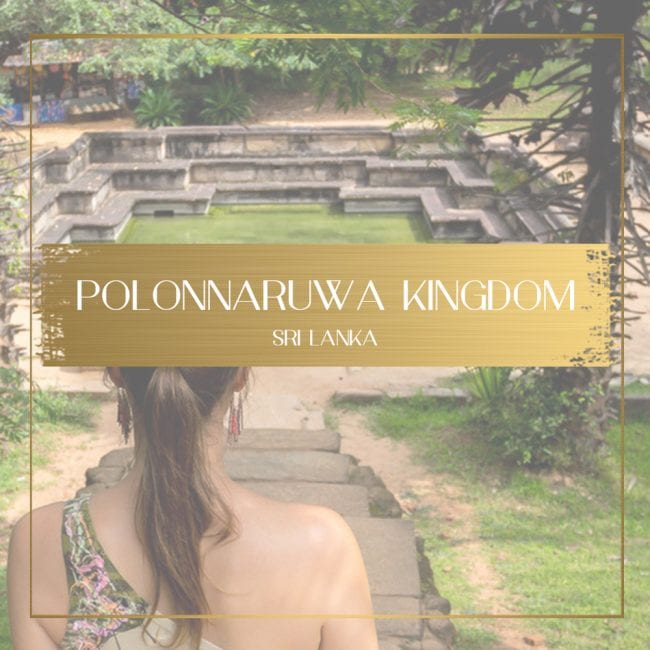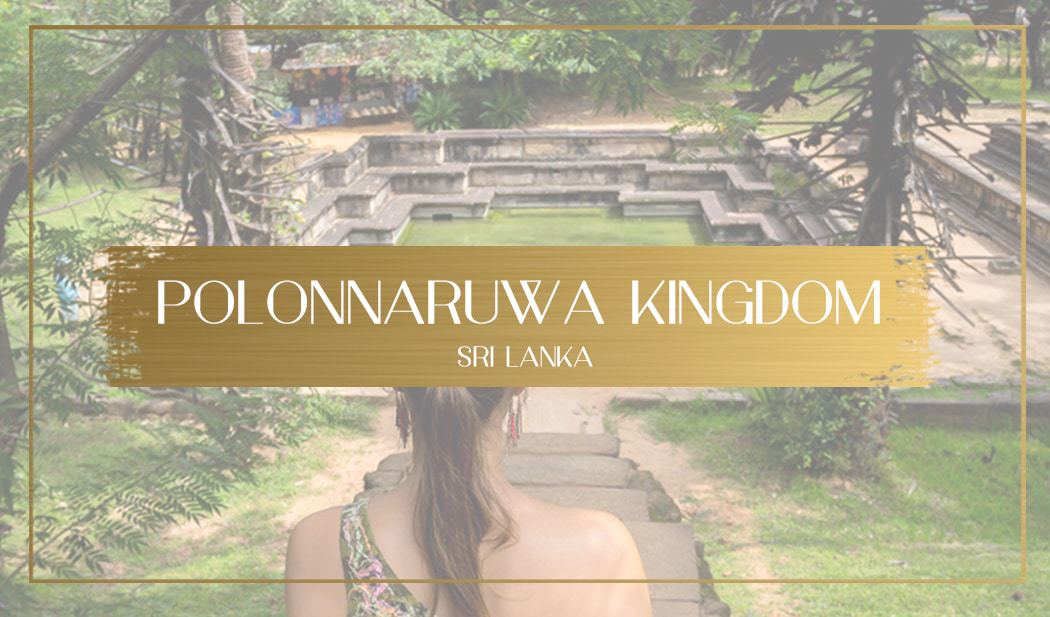Sieged and raided by the invading South Indian troops, Anuradhapura was abandoned in favor of Polonnaruwa in the 11th century and it became Sri Lanka’s new capital city. First chosen as the capital by the invading Chola Army of South India, Polonnaruwa attained its golden ager two centuries later, when the Sinhalese Troops pushed out the Chola and decided to keep Polonnaruwa as their capital because it had a more strategic location to Anuradhapura.
The ruins of the Polonnaruwa Kingdom lay about two hours South of Anuradhapura and about 175km from Colombo, the capital of modern Sri Lanka. They can be found on the East shore of the Topa Wewa Lake, or Parakrama Samudraya (the Sea of Parakrama), an artificial lake built by King Parakramabahu I that acted as a mote and as a reservoir for the city. An elaborate network of canals supplied water from the lake to the city.
The city’s golden age lasted only briefly as it was attacked by the South Indian Army and mostly destroyed, but the nature of its constructions and models of the buildings can be seen at the Visitor Center Museum at the entrance to the ruins, where tickets can be obtained.
Most of what is left are the many ruins of the dagobas, temples, buildings and walls built during the eleventh and twelfth century. Polonnaruwa was at the center of a Disney Documentary called Monkey Kingdom released in April 2015 where macaque monkeys inhabiting the many ruins are followed around and given life. The documentary also served to educate on the city’s historical value
Monkey Kingdom focuses on promoting the safeguard of the macaque monkeys and it was released on occasion of Earth Day. Famous Tina Fey narrates the story and Disney made a donation to Conservation Foundation for every person watching the movie.
As a visitor to Sri Lanka the macaque monkeys that roam freely and very closely to visitors in all the sites along the Golden Triangle became a nuisance and danger to be avoided. At one point, in Anuradhapura, one of them came after me showing his teeth purely because I was walking in his way.
Needless to say, I stayed away from them for the rest of the trip. This movie is a refreshingly heartwarming insight into the life of these incredibly smart creatures that will steal your lunch if you don’t watch out.
Some of the interesting sites in Polonnaruwa are the Royal Palace of King Parakramabahu, a seven story high building once, the remnants show extremely thick walls. To one of the sides of the Royal Palace there is a royal swimming pool down a few flights of stairs. The area is lovely and there is even a drinks stall selling refreshing liquid to the thirsty and hot visitors.
Polonnaruwa has a few well preserved Hindu and Buddhist smaller temples and shrines that can be seen in one piece. There are pavilions, relic houses, stupas and dagobas of all shapes and sizes but there are also ruined palaces, courtyards, pleasure gardens and intricate networks of bathing tanks.
One of the most impressive parts of Polonnaruwa, which extended over three by five kilometers, is the Gal Viharaya or Rock Temple. A group of four giant Buddha statues carved out of a single granite boulder, the largest of which towers 7m high. It is believed that they were part of a Buddhist Monastery.
Another noteworthy element is the Gal Potha or Stone book which is an 8m long stone slab carved with the deeds of King Nissankamalla.
Polonnaruwa went into decline with the death of King Nissankamalla. The constant invasions from the South Indian Chola Empire and Malay barbarians destroyed the order in the country and plunged it into the Dark Ages. With the capital shifting to in the thirteen century, Polonaruwa was hidden behind the thick jungle growth. By the beginning of the nineteenth century, the city was completely lost to nature only to be discovered a century later.

